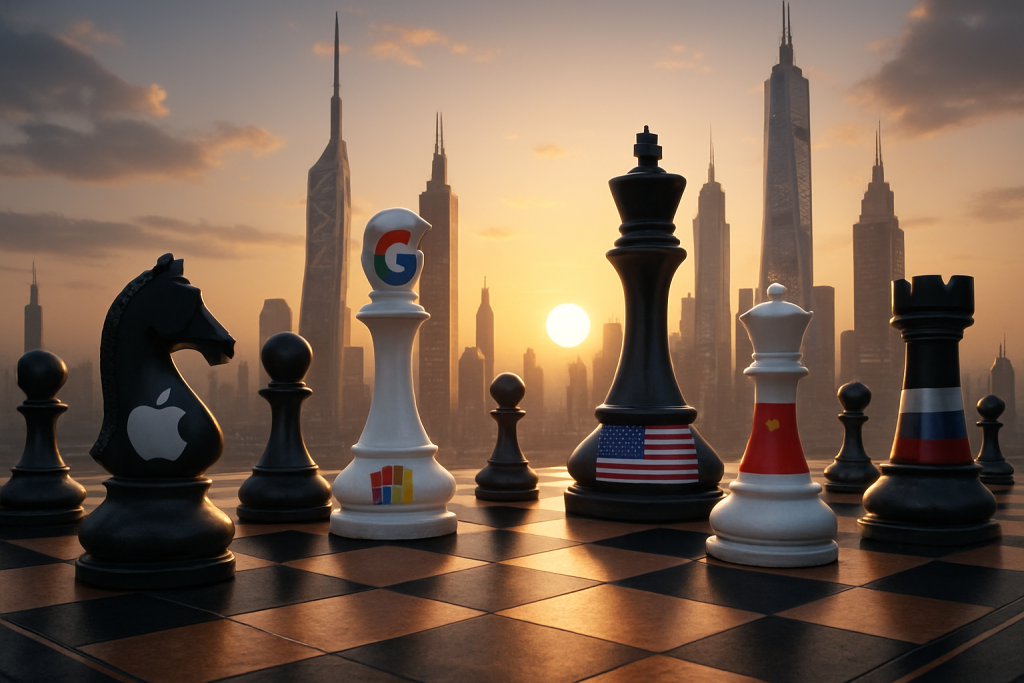The air in Beijing crackled with anticipation. Not just from the usual summer humidity, but from the sheer weight of expectations hanging over Jensen Huang, Nvidia’s CEO, as he stepped up to the microphone on July 16, 2025. This wasn’t just another corporate meet-and-greet; it was a high-stakes gambit in the global AI chess game, a dance between technological ambition and geopolitical realities.
Huang’s visit, his second to China this year, came at a pivotal moment. Imagine Obi-Wan Kenobi walking into the Mos Eisley cantina, knowing every eye is on him, every move scrutinized. That’s the vibe. The reason? China is a colossal market, representing a stunning 13% of Nvidia’s total revenue last fiscal year, a cool $17 billion. But it’s a market increasingly entangled in a web of U.S. government restrictions, designed to prevent advanced chips from falling into the wrong hands – specifically, those of the Chinese military.
To understand the tension, you need to rewind a bit. For years, Nvidia has been the undisputed king of AI chips. Their GPUs are the engines that power everything from self-driving cars to cutting-edge medical research. They’re the digital equivalent of the Millennium Falcon’s hyperdrive, making the impossible, possible. But Uncle Sam has become increasingly wary of China’s rapid technological advancements, seeing them as a potential threat to national security. Hence, the restrictions.
And it’s not just future sales that are at stake. Even Nvidia’s H20 AI chips, previously greenlit for the Chinese market, have now been caught in the crossfire, banned from export. This move has sent ripples of unease through the tech world, raising questions about the future of U.S.-China technological cooperation, or rather, the lack thereof.
The political pressure on Huang was palpable. A bipartisan group of U.S. senators, sounding like a chorus of concerned parents, urged him to steer clear of any engagements with companies linked to China’s military or intelligence apparatus, or those slapped with export restrictions. The message was clear: tread carefully, Jensen. Don’t become a pawn in someone else’s game.
Despite the geopolitical headwinds, the demand for Nvidia’s chips in China remains incredibly high. Why? The answer lies in a single word: CUDA. CUDA, Nvidia’s proprietary computing platform, is the industry standard, the lingua franca of AI development. It’s the secret sauce that makes Nvidia’s chips so desirable, even in the face of growing competition from domestic Chinese firms like Huawei. Think of it like this: everyone wants to speak fluent CUDA, and Nvidia is the only language school in town.
Nvidia’s dominance is reflected in its staggering market value, which recently soared past $4 trillion. That’s not just a number; it’s a testament to the company’s central role in the global AI revolution. They’re not just selling chips; they’re selling the future.
So, what are the implications of all this? Well, on a purely economic level, Nvidia stands to lose a significant chunk of revenue if its access to the Chinese market is further restricted. This could impact its stock price, its research and development budget, and its overall ability to innovate. It’s a financial tightrope walk, balancing short-term profits against long-term strategic goals.
But the implications go far beyond Nvidia’s bottom line. The U.S. government’s actions are forcing China to accelerate its own domestic chip development efforts. This could lead to the emergence of a rival ecosystem, potentially challenging Nvidia’s dominance in the long run. It’s a classic case of unintended consequences, where trying to contain a competitor inadvertently fuels its growth.
Furthermore, the restrictions raise ethical questions about technological access and control. Should the U.S. government have the power to dictate which countries can access certain technologies? What are the potential implications for global scientific progress and innovation? These are complex questions with no easy answers.
In the end, Jensen Huang’s visit to Beijing was more than just a business trip. It was a symbol of the complex, intertwined relationship between technology, politics, and economics in the 21st century. It’s a story that’s still unfolding, and one that will likely shape the future of AI for years to come. Just Buzz will be here to keep you plugged in.
Discover more from Just Buzz
Subscribe to get the latest posts sent to your email.


